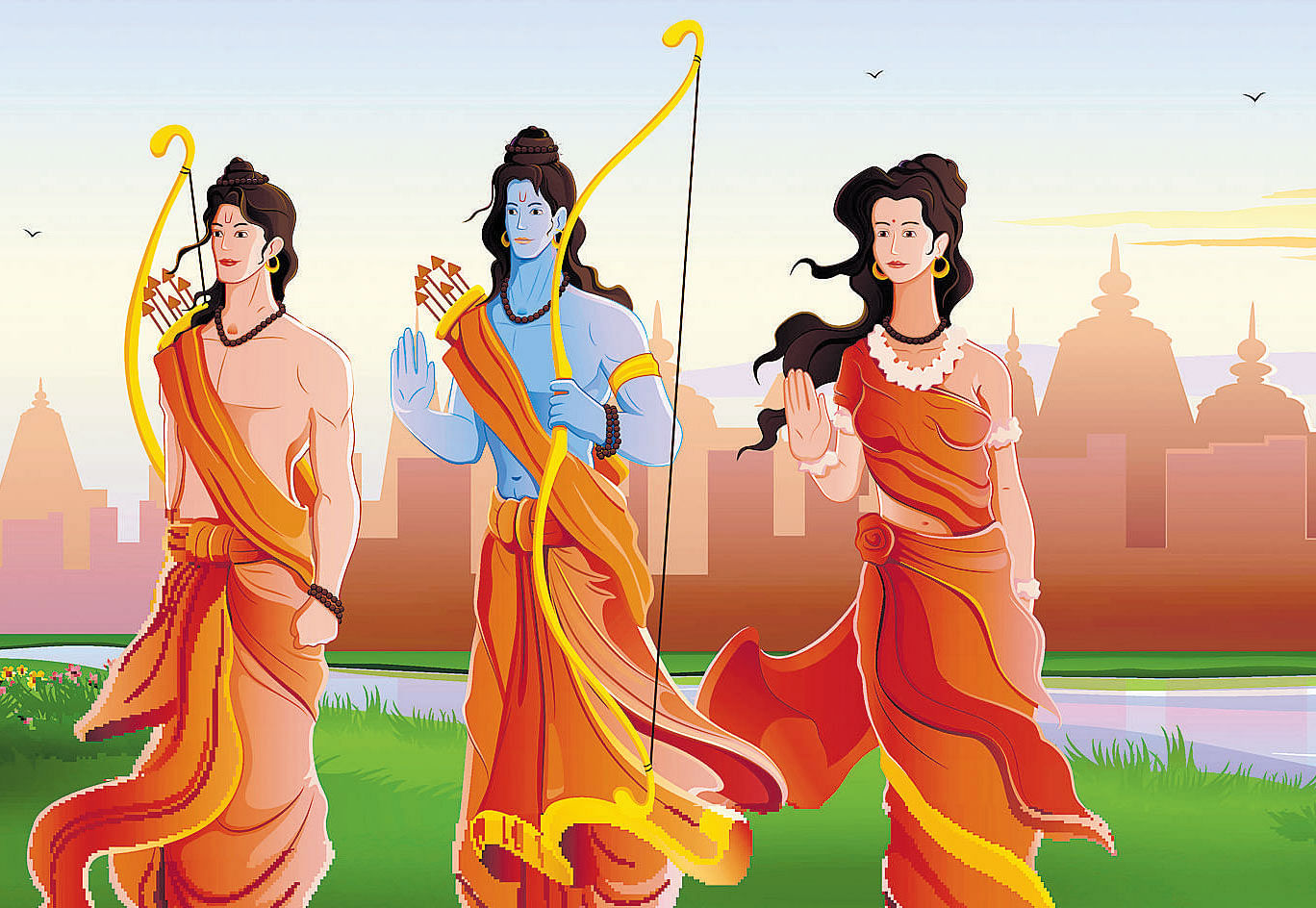
People in India and outside, who are familiar with the epics of the Mahabharata and the Ramayana, know about female protagonists such as Sita, Draupadi, Kunti, and so on.
These women have been put on pedestals of honour, fortitude and what is regarded as ‘ideal womanhood’. But contemporary writers and creative performers are reading in between the lines and bringing out certain nuances in their characters that make them more human and more accessible, as a discussion on the epic women, held as a part of a recent literary festival in Kolkata, brought out.
Another refreshing aspect of this new look at the ancient scripts is that writers are training their literary lens at ‘lesser’ women characters, who have been otherwise overshadowed by the heroines.
Amish Tripathi, the writer of bestsellers including the Meluha trilogy that focuses on Shiva, points out, “Our epics are not one book, rather, a collection of books, written by different people at different times, and so sometimes values prevalent in the time are reflected in the portrayal of women characters.” Earlier, he says, women were not portrayed as subservient, which happened later for various reasons. “The further one goes back in time, the more one finds that women were strong feminists,” he articulates. For
instance, he shares, “Parvati (Shiva’s consort) is no pushover. She has a mind of her own; she takes her own decisions and follows them. For example, she decides to go to her father’s ‘daksha yagya’ uninvited even though Shiva asks her not to.”
From a male perspective
An accomplished Indian classical and contemporary dancer and choreographer, Anita Ratnan is known for “exploring characters in the epics that are at the core of the stories”. She says, “Can the Ramayana be written without Manthara being portrayed as a reviled figure? As adviser to Kaikeyi, the second wife of King Dasaratha, she is seen as someone who masterminded Rama’s exile. What was her motive in doing so, if it was true? I like to explore answers to such questions through my work.” She also sees the epic’s writer Valmiki’s portrayal of Ahalya, who was turned into stone by a curse, as “one invisible or ignored.”
As a solo performer and choreographer of A Million Sitas, she has taken on the characters of Mandodari, Ravana’s wife, Surpanakha, his sister, who is portrayed as ‘demoness’ though she was a very beautiful woman with a mind of her own, Manthara, Ahalya and, of course, Sita. “Some of these women,” she feels, “have been either ignored or portrayed from a male point of view.”Not just the Ramayana, but the Mahabharata, too, has had the creatives asking questions for decades now.
In the 1980s, Saoli Mitra, a well-known theatre person in Kolkata, through her solo act in Nathavati Anathbat (married, but without a husband) had put forth this query as Draupadi, a victim of patriarchal hypocrisy: why even with five brave husbands, (though it was not of her own choice) was she not secure? With her path-breaking play, stoking the questioning mind, Saoli had taken the aficionados by storm.
In the 1960s, scholar Iravati Karve set a precedent of sorts when she examined the protagonists, including women, in the Mahabharata from a humanist, call it feminist, viewpoint, in her analytical essays compiled in Yuganta: The End of an Epoch. In the preface she asserts, “The Mahabharata does not show that there was any attitude of chivalry towards women.”
Modern thinking
Today’s generation of writers, who are looking critically at the epics, seem to take forward these ideas. Pune-based author Kavita Kane’s best-selling debut book, Karna’s Wife: The Outcast’s Queen, is on Uruvi, the wife of Karna, the unsung hero of the Mahabharata. She is hardly visible in the magnum opus though she was an accomplished Kshatriya princess. She fell in love with Karna and stood by him in his times of distress, when he was ridiculed for his ‘low birth’.
Besides this, Kavita has written on other lesser characters of the epics, like Urmila, Sita’s sister and Lakshman’s wife who was left behind when he opted to go to exile with his elder brother and sister-in-law Sita. “Lakshman is portrayed as a dutiful brother and protector of Sita in the jungles. Urmila was Sita’s sister, equally talented and beautiful. What did she do in those 14 long years in her husband’s absence? How did she take it when he left her behind as a new bride? Wasn’t he a husband to her, too?” she asks. Urmila, in fact, became a scholar and retired into ‘private exile’.
Then there’s Menaka’s Choice, penned by Kavita, that portrays the celestial dancer, who is always seen as the one to break the tapasya (long periods of meditation) of the sages, and hence almost a ‘vamp’. “Look beyond Menaka’s beautiful face — behind it there is enormous sadness, disappointment, guilt and anger…but she moves on regardless with love and hope,” says the writer.
Bengaluru girl Samhita Arni, who wrote The Mahabharata - A Child's View at the age of 11, did not lose her interest in the epics as she grew up because she believes that “they should be retold by every generation … (to) reflect that generation’s anxieties and issues”. Her Sita’s Ramayana, a graphic novel, went on to become an international bestseller.
And what about the rakshashis, the demonesses as painted in the epics by writers? How did they live after the defeat? “Those are exactly the kind of the in-between characters I am interested in,” she says. Samhita’s last book, The Missing Queen is “a political story” about Sita in exile once again after she returns to Ayodhya. It has many strong female characters.
Well aware that all readers would not take kindly to her interpretation,
she calls it a “speculative mythological feminist thriller”.Surely, with writers like these, enthusiasts of epic are definitely in for exciting times, particularly with such new ways
of looking at stories handed down over the centuries.